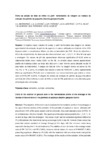Use este identificador para citar ou linkar para este item:
http://www.alice.cnptia.embrapa.br/alice/handle/doc/533504| Título: | Efeito da adição de fubá de milho no perfil fermentativo da silagem do co-produto da extração do palmito da pupunha (Bactris gasipaes Kunth). |
| Autoria: | BARREIROS, D. C.  OLIVEIRA, L. S.   PEREIRA, L. G. R.   AZEVÊDO, J. A. G.   SILVA, C. F. P. G.   ALMEIDA, F. M.   PEDREIRA, M. S.   LOURES, D. R. S.   |
| Afiliação: | CNPq; LEANDRO SILVA OLIVEIRA, CNPC; CPATSA. |
| Ano de publicação: | 2007 |
| Referência: | In: CONGRESSO BRASILEIRO DE ZOOTECNIA, 17.; CONGRESSO INTERNACIONAL DE ZOOTECNIA, 4.; REUNIÃO NACIONAL DE ENSINO DE ZOOTECNIA, 13.; FÓRUM DE ENTIDADES DE ZOOTECNIA, 30.; FÓRUM DE COORDENADORES DE CURSOS DE ZOOTECNIA DAS UNIVERSIDADES BRASILEIRAS, 3.; FÓRUM DE ESTUDANTES DE CURSOS DE ZOOTECNIA DAS UNIVERSIDADES BRASILEIRAS, 3., 2007, Londrina. A Zootecnia frente a novos desafios: anais. Londrina: UEL: ABZ, 2007. 5 f. 1 CD-ROM. |
| Conteúdo: | Resumo: O objetivo desse trabalho foi avaliar o perfil fermentativo das silagens do resíduo agroindustrial da extração do palmito da pupunha in natura, aditivada com fubá de milho (10% do peso verde) e emurchecida. Utilizou-se silos de laboratório (de PVC, 10 cm de diâmetros x 40 cm de comprimento). As aberturas dos silos ocorreram aos 1, 3, 5, 7, 14, 28 e 56 dias após a ensilagem. Os valores de pH não apresentaram diferença significativa (P>0,05) entre os tratamentos tendo como média (3,80) no dia 56, no entanto esses valores apresentaram padrão de mudança cúbico ao longo dos dias com o valor mínimo sendo atingido no dia 14 para todos os tratamentos. A adição do fubá de milho na silagem elevou os teores de MS (19,71%) e PB (7,09%), no entanto não reduziu o valor de N-NH3/NT (7,89%) apresentando diferença significativa (P<0,05) com o tratamento com emurchecimento que obteve o menor valor de N-NH3/NT (6,35%). A silagem do resíduo da extração do palmito da pupunha aditiva com fubá de milho melhorou o valor de MS e o valor de PB, podendo ser uma alternativa para alimentação dos ruminantes. [Effect of the addition of ground corn in the fermentation profile of the ensilage of the residue of the extration of the palmetto of pejibaye (Bactris gasipaes Kunth)]. Abstract: The objective of this work was to evaluate the fermentativo profile of the ensilages of the agro-industrial residue of the extration of the palmetto of pejibaye in natura, aditivada with ground corn (10% of the green weight) and emurchecida. One used laboratory silos (of PVC, 10 cm of diâmetros x 40 cm of length). The openings of the silos had occurred to the 1, 3, 5, 7, 14, 28 and 56 days after the ensilagem. The values of pH had not presented significant difference (P>0,05) between the treatments having as average (3,80) in day 56, however these values had presented cubical standard of change throughout the days with the minimum value being reached in the day the 14 for all treatments. The addition of corn of maize in the ensilage raised texts of DM (19.71%) and PB (7.09%), however did not reduce the value of N-NH3/NT (7.89%) presenting significant difference (P<0,05) with the treatment with emurchecimento that got the lesser value of N-NH3/NT (6.35%). The ensilage of the residue of the extration of the palmetto of pejibaye additive with ground corn improved the value of DM and the value of PB, being able to be an alternative for feeding of the ruminants. |
| Thesagro: | Nutrição Animal Alimento Alternativo Alimento Para Animal Bactris Gasipaes Fermentação Resíduo Pupunha Ruminante Subproduto Valor Nutritivo |
| NAL Thesaurus: | Industrial byproducts Animal nutrition Animal feeding |
| Palavras-chave: | Fubá de milho Silagem de milho Alternative feedstuff |
| Tipo do material: | Resumo em anais e proceedings |
| Acesso: | openAccess |
| Aparece nas coleções: | Resumo em anais de congresso (CNPC)  |
Arquivos associados a este item:
| Arquivo | Descrição | Tamanho | Formato | |
|---|---|---|---|---|
| AACEfeitodaadicaodefuba.pdf | 23,65 kB | Adobe PDF |  Visualizar/Abrir |









